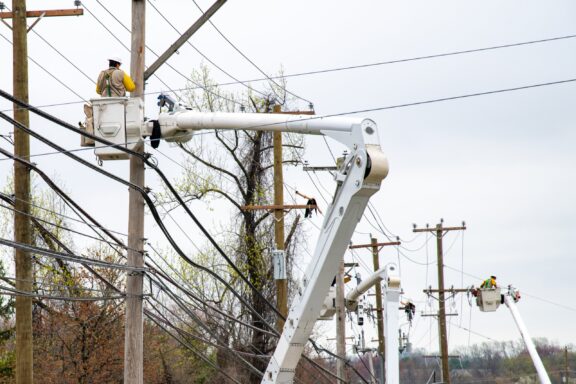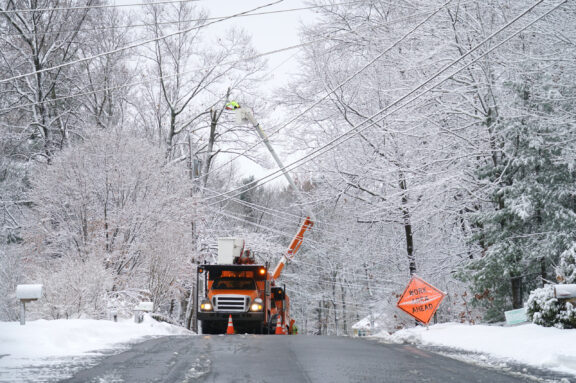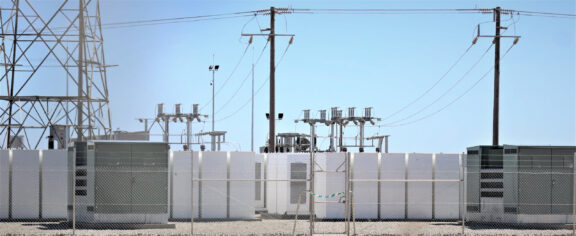
Many patients’ lives depend on hospital equipment such as ventilators, dialysis machines and incubators. Power outages that knock out those machines put those lives at risk — and when the power doesn’t come back, the risk only intensifies.
Understanding legal requirements for hospital backup power is critical for ensuring that life-saving care can continue even when the lights go out.
Keeping the Power On
Mission-critical systems are essential to the survival and function of organizations like hospitals. These systems have no tolerance for downtime — a blackout or brownout can spell the difference between life or death for many patients.
To prepare for these emergencies, hospitals have large emergency power systems that can provide power to the entire facility within seconds. These systems may be a single generator, or they may consist of multiple units that each power a specific area. Frequent testing and preventative maintenance ensure these systems can handle full loads during emergencies.
Hospital Emergency Power Requirements
Hospitals must meet strict standards for backup power supplies. Whether a facility uses a generator or an uninterruptible power supply (UPS), these standards ensure that hospitals can continue operations even during outages.

Following these requirements is essential for maintaining a facility’s reputation and operations. For example, testing your backup power supply on a monthly and annual basis is a requirement for Joint Commission accreditation. Failing to comply and losing accreditation can cost your hospital substantial revenue from payers such as the Centers for Medicare and Medicaid Services (CMS).
Perhaps most importantly, backup power supplies for hospitals — and other mission-critical facilities — must comply with the following standards from the National Fire Protection Association (NFPA).
NFPA 101
Also called the Life Safety Code, NFPA 101 defines the basic emergency power requirements hospitals must follow.
Among other requirements, NFPA 101 specifies that any care facility housing patients who are dependent on life support must have an emergency power supply (EPS) on site. To properly prepare for emergencies, hospitals may only install certain types of generators listed in the standard.
This standard also requires hospitals to perform ongoing maintenance with qualified repair and maintenance technicians to ensure the generator can always meet demand.
NFPA 99
NFPA 99 takes a risk-based approach to determine the appropriate backup power requirements for healthcare facilities. In this standard, generators are classified as electrical systems (EES) and must be serviced according to specific requirements.
Hospitals must evaluate their systems and equipment based on the following four risk categories:
- Category 1: Facilities or areas within healthcare facilities where electrical failures could result in serious injury or death. Power supplies in Category 1 facilities must be constantly available because they power the areas with the highest risk. Therefore, they are under the strictest testing and performance requirements. Examples of Category 1 systems include operating rooms, life support apparatus and intensive care units.
- Category 2: Facilities or parts of facilities where electrical failures are likely to cause minor injury. Requirements for these systems are still strict, but they are slightly looser than Category 1. Some examples of Category 2 systems can include emergency call systems and lighting in patient rooms.
- Category 3: Healthcare facilities where electrical failures are unlikely to result in injury — if the generator cannot restore power right away, it will not immediately impact patient care. Some examples of Category 3 systems include hospital plumbing systems and power in general care rooms.
- Category 4: Areas where electrical failures have no impact on patient health. These systems are under the loosest requirements and can include televisions in waiting rooms, lawn sprinklers and public-address systems.
NFPA 110
The NFPA 110 standard outlines key requirements and best practices for installing and maintaining emergency power systems (EPS), such as backup generators. This standard is one of the essential codes hospitals must follow, as it connects to many other NFPA standards.
Like NFPA 99, NFPA 110 bases its requirements on risk categories. This standard defines two levels of risk:
- Level 1: EPS failure could pose a serious risk of injury or death to patients or care providers.
- Level 2: EPS failure is unlikely to cause serious injury or death.
The maintenance requirements are different for each risk level, but most hospitals will need to follow Level 1 regulations. Additionally, the NFPA revises this standard every 3 years, so hospitals must stay up to date to ensure ongoing compliance.
NFPA 70
Also called the National Electrical Code (NEC), NFPA 70 outlines safety best practices for installing, operating and maintaining electrical equipment. These guidelines help electricians and contractors prevent fire hazards and maintain their own personal safety.
NFPA 70 also specifies how quickly a backup power system must activate during an outage, which is especially critical for hospitals. Power must be restored to life support and other legally required loads within the specified time limits to comply with this standard.
The Role of Load Banks
You need to know you can rely on your emergency power supply system (EPSS) when emergencies strike. While your EPSS has to be capable of handling significant loads, the actual demand may exceed the system’s capacity, resulting in disaster. That’s where load bank testing comes in.
A load bank is a device that tests the performance capabilities of power supplies. Conducting routine hospital load bank testing according to all applicable standards ensures the reliability and health of your standby power sources.
Load bank testing and load augmentation are also beneficial for primary power sources. The testing protocol applies various load conditions to a system to provide a comprehensive report, enabling you to detect any issues with your system before they grow into large-scale problems.
A regular testing schedule is especially important if your facility’s power requirements change due to renovations, as it can affect the demand normal operation places on your power supply.
Load bank testing is also a vital element of preventative maintenance for diesel generators because it helps eliminate wet stacking, which occurs in generators that either see infrequent use or typically operate below the manufacturer-recommended operating temperature.
This infrequent use at optimal temperatures results in a buildup of unburned fuel and carbon that can damage a diesel generator’s internal mechanisms and, if left long enough, can create a fire hazard. During load bank testing, the generator reaches normal operating temperature, allowing it to burn off the fuel and carbon deposits and improve performance.

Find Load Banks for Hospitals From LBD
At LBD, we strive to provide reliable, high-quality load banks and ongoing, tailored customer support. Whether you need to rent a load bank or want a permanent solution, you can count on us to help.
Fill out our quote request form today to receive a free quote, or contact us online for more information about our healthcare load bank solutions.
We Are Here
To Help
Our team is here to support you and solve your power challenges. Connect with our responsive experts today to learn about our customized power solutions and products.


